Over the years, the blooming of azaleas in Piazza di Spagna (the Spanish Steps) has become a symbol of the arrival of spring in Rome, bringing life to the square and attracting crowds from all over the world. Each year, the flowers burst into bloom in late April or early May, depending on the weather conditions.
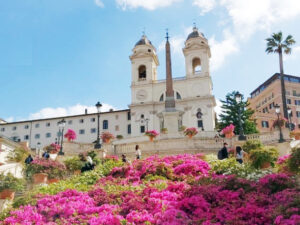
Blooming of azaleas in Piazza di Spagna Rome
Despite occasional challenges such as unfavorable weather conditions or pest infestations, the azaleas in Piazza di Spagna have continued to bloom beautifully year after year. The city of Rome takes excellent care to ensure the health of the plants, often replacing older specimens with new ones to keep the display fresh and vibrant.
Interesting facts about the blooming of azaleas in Piazza di Spagna Rome:
1- The tradition of planting azaleas in Piazza di Spagna dates back to the 18th century when the Spanish Steps and the square were designed.
2- Azaleas were chosen for the square because they are easy to grow, can withstand urban pollution, and provide a spectacular display of color.
3- The azaleas in Piazza di Spagna are not grown from seed but are instead propagated from cuttings taken from existing plants.
4- The flowers are carefully tended to by a team of gardeners, who prune and shape them to ensure they are in perfect condition for the blooming season.
5- The blooming of azaleas in Piazza di Spagna typically lasts for about two weeks, with the peak bloom occurring in mid-May.
6- During the blooming season, the square is lit at night, creating a magical atmosphere perfect for a romantic stroll.
7- The blooming of azaleas in Piazza di Spagna is a sight to behold and a celebration of spring and renewal, making it a cherished event in the city’s calendar.
8- The azaleas in Piazza di Spagna are not just beautiful but also have symbolic meaning, representing love, femininity, and softness in the language of flowers.
Make sure to visit the Spanish steps this week since the display of azaleas lasts only for a few weeks.
For updates on Italian immigration and expat-related topics, be sure to subscribe to our newsletter or contact us for a consultation!
Need Help with Your Citizenship Application? Email us at [email protected] for a free consultation!

Understanding Salaries in Italy: A Guide for Expats and Newcomers (2025)
If you’re an expat living in Italy or someone considering relocating, understanding the salary landscape remains a crucial element in planning your life in the country. This article provides an overview of average salaries in Italy, how they vary by profession, age, gender, education, and region, as well as how they compare to other European […]
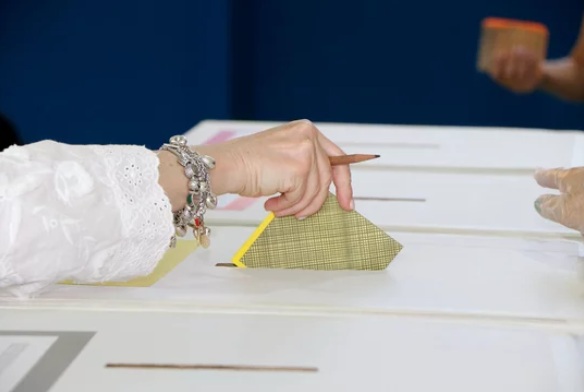
Voters to Decide on June 8–9: Shorter Citizenship Wait and New Labor Protections
On Sunday, June 8, and Monday, June 9, 2025, Italian citizens eligible to vote will be called to the polls for a major referendum on five key issues affecting labor rights and citizenship. These abrogative referendums (under Article 75 of the Italian Constitution) allow voters to decide whether to repeal existing laws or specific legal […]
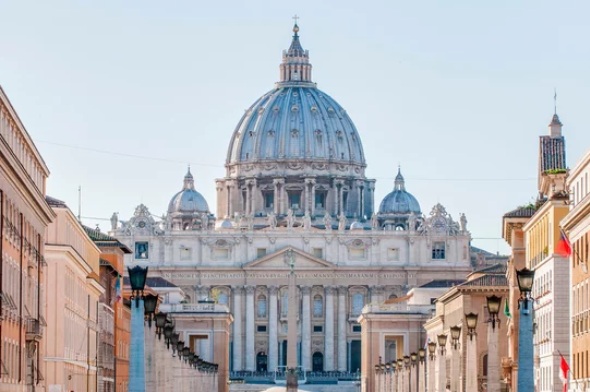
Conclave to Elect New Pope to Begin on May 7th
Following the passing of Pope Francis, a historic moment is once again unfolding in the heart of Rome. The Conclave to elect the 267th Pope will officially begin on May 7th, 2025, marking a major event in both the Catholic Church and Italian history. For expats living in Italy, understanding the significance of this process […]
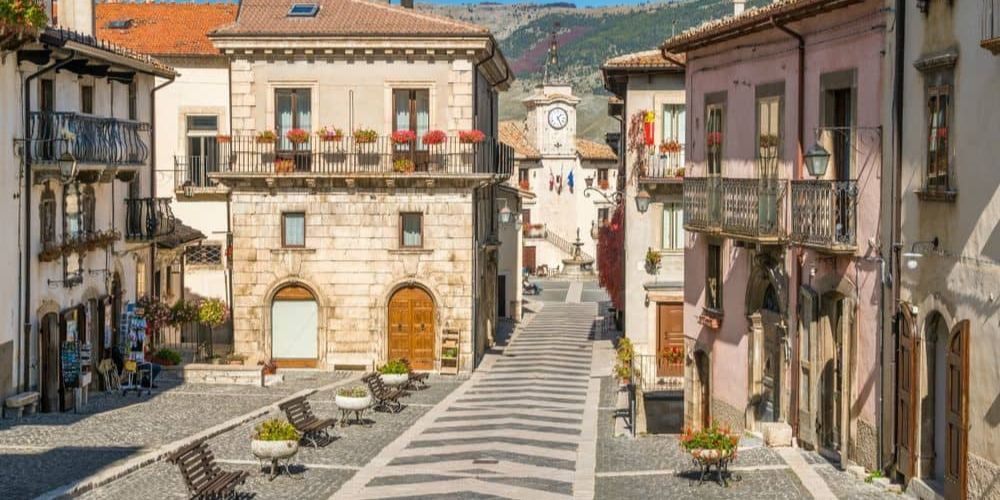
Living in Abruzzo, Italy: Retirement, Lifestyle, and Cost of Living (2025 Guide)
Why Choose Abruzzo? Abruzzo, located in central Italy between the Adriatic Sea and the Apennine Mountains, is a dream destination for those looking to retire or relocate for a more relaxed and affordable lifestyle. Known for its stunning landscapes, charming medieval villages, national parks, and friendly locals, Abruzzo offers an authentic Italian experience—without the crowds […]
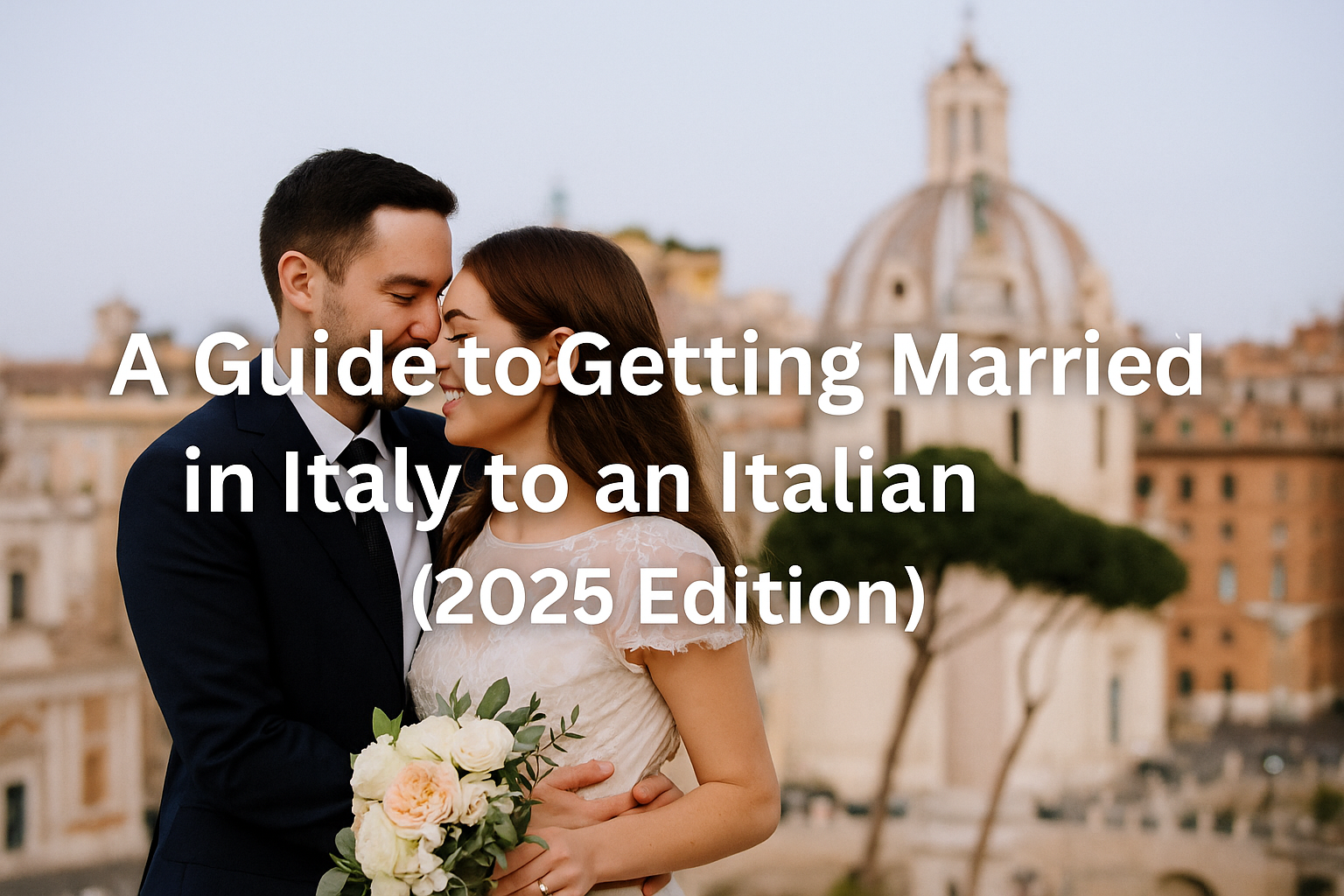
A Guide to Getting Married in Italy to an Italian (2025 Edition)
If you’re a foreigner planning to marry an Italian in Italy in 2025, there are important legal steps to follow. This guide walks you through the process: Legal Requirements • Both partners must be at least 18 years old • Neither partner can be currently married • Divorce or death certificates must be provided if previously married Documents […]
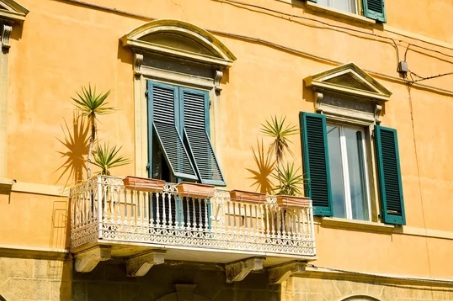
How to find an apartment in Rome: the ultimate expat guide
Guest Article written by helpmaterome.com Finding an apartment to rent in Rome is HARD. Demand for rentals is sky-high, so that little place you had your eye on last week has probably already gone by the time you pick up the phone to ask about it. You need to move quickly at all stages: calling, […]

Italy Observes Duelo: The Papal Demise and Transition
Italy has entered a period of official mourning, or duelo, following the passing of His Holiness Pope Francis I on April 21, 2025. For foreign residents within the capital, the customs and procedures associated with a papal demise and subsequent election may present unfamiliar traditions. This article endeavors to illuminate the role of the papacy, […]

Easter in Italy 2025: What to See, Eat, and Celebrate
Whether you’re religious or not, Easter is a great opportunity to visit Italy or acquire an Italian mindset. The weather is pleasant, and there are numerous intriguing customs to observe, ranging from sprinting monks and massive sculptures to colorful processions and larger-than-life reenactments. The Papal Mass and Urbi et Orbi Blessing in Vatican City The […]
Explore All the Exciting Things to Do in Rome and Italy this May, from the well-known attractions to hidden gems!
Welcome, expats living in Rome and Italy! You’ve made a fantastic decision to call this beautiful country home. We’ve compiled a list of the best things to do and the events happening in May to help you immerse yourself in the local culture. And, for those who are new to public transport in Italy, we’ve got you covered with some handy tips to make your travels stress-free.

May 1st: May Day Celebrations in Rome
May 1st is a national holiday known as International Workers’ Day, or May Day, which is widely celebrated across most European countries, similar to Labor Day.
Romans particularly enjoy this day as an opportunity to spend time outdoors, indulging in picnics or leisurely lunches with friends and family.
Here’s a list of what’s closed and open on May 1, 2023, in Rome:
Closed on May 1, 2023:
– Vatican Museums and Sistine Chapel
– Capitoline Museums
– Castel Sant’Angelo
– Ostia Antica
Open on May 1, 2023:
– Colosseum, Roman Forum, and Palatine Hill
– Galleria Borghese
– Saint Peter’s Basilica (as well as other churches)
– Galleria Doria Pamphilj
– The Pantheon
Tip: Take advantage of the holiday to explore Rome’s iconic sites and immerse yourself in the city’s vibrant atmosphere.
Primo Maggio Concert: A Celebration of Music in Rome
Start your May adventure with the annual Primo Maggio Concert held in Piazza San Giovanni. This free, open-air event features a diverse lineup of Italian and international artists. It’s an ideal opportunity to socialize with locals, dance the night away, and immerse yourself in Rome’s vibrant music scene.

Rome’s Secret Gardens: The Perfect Escape
Tired of the tourist crowds? Venture off the beaten path and discover Rome’s hidden parks. Villa Doria Pamphili, Villa Ada, and Parco degli Acquedotti offer serene settings for a relaxing picnic or leisurely stroll, allowing you to recharge amidst lush greenery.

Rome’s Blooming Roseto Rose Garden on Aventine Hill
The picturesque Roseto Rose Garden, nestled on the Aventine Hill in Rome, opens its gates to the public from April 21st through early June. In recent years, the garden has also been reopening for a couple of weeks in mid-October.
However, May is the ideal time to visit, as the roses reach their peak beauty, showcasing their magnificent full blooms. Not only is entry to the Roseto Rose Garden free of charge, but it also tends to be relatively uncrowded, making it the perfect serene escape amidst the bustling city.

Open House Roma
Hundreds of palaces, palazzos, ruins, and monuments in and around Rome are free to explore in May.
The dates for Open House Roma in 2023 are May 20-28.
Visit a variety of homes ranging from modern to old. The site is only in Italian, but you can view photographs of the numerous spots you may visit, and if you click on any of them, a map of their location will appear.
The Street Art Scene in Rome: A Visual Feast
Rome’s thriving street art scene adds a modern touch to the ancient city. Explore neighborhoods like Ostiense, Pigneto, and Tor Marancia to uncover striking murals, thought-provoking installations, and captivating graffiti. It’s a unique way to experience Rome’s contemporary culture.
Food Festivals: A Culinary Adventure
Food lovers, this one’s for you! May is the perfect time to indulge in Rome’s food festivals. Sample traditional Roman dishes at the Cacio e Pepe Festival or treat your taste buds to artisanal gelato at the Gelato Festival. These events provide a wonderful opportunity to savor Italy’s culinary delights and mingle with locals.
Night of the Museums: History Comes Alive
Witness Rome’s rich history in a new light during the Night of the Museums. This exclusive event allows you to explore Rome’s museums and cultural sites after dark, with many locations hosting special activities and performances. It’s a magical experience that shouldn’t be missed.
Check this list of participating museums: Capitoline Museums, Centrale Montemartini, Mercati di Traiano – Museo dei Fori Imperiali, Museo dell’Ara Pacis, Museo di Roma, Museo Napoleonico, Museo di Roma in Trastevere, Museo Pietro Canonica a Villa Borghese, Musei di Villa Torlonia (Casina delle Civette, Casino Nobile, Serra Moresca), Museo delle Mura, Museo Carlo Bilotti – Aranciera di Villa Borghese, Museo di Scultura Antica Giovanni Barracco, Museo Civico di Zoologia, Museo della Repubblica Romana e della memoria garibaldina, Galleria d’Arte Moderna, Museo di Casal de’ Pazzi and more.
There will be a lot of concerts and special performances and events happening in Rome too!
For the full list of the participating museums and sites, check out museiincomuneroma.it
Assisi’s Calendimaggio Festival: A Medieval Journey
Just a couple of hours away from Rome, the enchanting town of Assisi hosts the Calendimaggio Festival. This lively event celebrates the town’s medieval heritage with colorful parades, captivating theatrical performances, and traditional music. It’s a unique opportunity to step back in time and experience Italy’s rich history.

Giro d’Italia: A Thrilling Cycling Race
Witness one of the world’s most famous cycling races, Giro d’Italia, as it winds its way through Italy’s breathtaking countryside. Join locals in cheering on the cyclists and soak up the electric atmosphere. Check out the official website to get all the information and plan for your adventure!
The International Kite Festival in Cervia: A Sky Full of Colors
For a family-friendly day trip, head to the coastal town of Cervia for the International Kite Festival. This vibrant event showcases stunning kites from around the world, alongside flying displays and kite-making workshops. It’s a fun and unforgettable experience for all ages. Check the website for more information!
The Open Cellars Event: A Toast to Italy’s Wine Culture
On the last weekend of May, wineries across Italy open their doors to the public for the Open Cellars event. Embark on a scenic road trip through the country’s picturesque vineyards, sample exquisite wines, and learn about the winemaking process. This event is perfect for wine enthusiasts and those looking to explore Italy’s countryside.
Tips for Expats and Tourists Visiting Italy in May
Dress for the Weather and Cultural Norms
May in Italy brings pleasant temperatures and the beginning of the summer season. Pack lightweight, breathable clothing and comfortable walking shoes for daytime explorations. However, it’s essential to respect cultural norms, especially when visiting religious sites. Ensure you have a shawl, scarf, or a light jacket to cover your shoulders and wear modest clothing that covers your knees when entering churches or other sacred places. Don’t forget to pack a light rain jacket or umbrella, as May can occasionally bring showers.
Familiarize yourself with the local and regional transport system
To understand the schedule and routes for buses, trams, and trains in Italy can be tricky at first. Check out every city public transport website beforehand!
For example: Rome’s ATAC website and app provide valuable information on routes, schedules, and ticketing. You can purchase a Roma Pass or Integrated Time Ticket (B.I.T.) for unlimited access to Rome’s public transport network. These passes can save you money and make traveling more convenient.
When using trains to travel across Italy, consider purchasing a Trenitalia or Italo pass, depending on your route and travel frequency. Both companies offer a variety of ticket options to suit your needs.
Google Maps and Moovit are great apps to help you navigate public transport in Rome and other Italian cities. They provide real-time updates, route planning, and estimated travel times.
Keep in mind that some public transport services may have limited schedules during May holidays and local festivals. Always check timetables in advance to avoid delays.
Learn Basic Italian Phrases and Local Customs
While many Italians speak English, learning some basic Italian phrases will make your interactions with locals more enjoyable and help you navigate public transportation and restaurants more easily. Simple phrases like “Buongiorno” (good morning), “Grazie” (thank you), and “Dov’è il bagno?” (where is the bathroom?) can go a long way. Also, familiarize yourself with Italian customs, such as greetings, dining etiquette, and tipping practices, to ensure a smooth and culturally respectful experience.
We can help you with a free Italian lesson to get you ready for your next adventure in Italy!
In conclusion, Rome and Italy offer a wealth of exciting events, hidden gems, and unforgettable experiences for expats in May. With our comprehensive guide and public transport tips, you’ll be well-equipped to make the most of your time in this captivating country. Embrace your new home, and happy exploring!
Don’t miss out on our latest updates and legal advice for expats in Italy. Check out our Social Media accounts and Newsletter so you can join us in the next Social Meet-ups for Expats!

Understanding Salaries in Italy: A Guide for Expats and Newcomers (2025)
If you’re an expat living in Italy or someone considering relocating, understanding the salary landscape remains a crucial element in planning your life in the country. This article provides an overview of average salaries in Italy, how they vary by profession, age, gender, education, and region, as well as how they compare to other European […]

Voters to Decide on June 8–9: Shorter Citizenship Wait and New Labor Protections
On Sunday, June 8, and Monday, June 9, 2025, Italian citizens eligible to vote will be called to the polls for a major referendum on five key issues affecting labor rights and citizenship. These abrogative referendums (under Article 75 of the Italian Constitution) allow voters to decide whether to repeal existing laws or specific legal […]

Conclave to Elect New Pope to Begin on May 7th
Following the passing of Pope Francis, a historic moment is once again unfolding in the heart of Rome. The Conclave to elect the 267th Pope will officially begin on May 7th, 2025, marking a major event in both the Catholic Church and Italian history. For expats living in Italy, understanding the significance of this process […]

Living in Abruzzo, Italy: Retirement, Lifestyle, and Cost of Living (2025 Guide)
Why Choose Abruzzo? Abruzzo, located in central Italy between the Adriatic Sea and the Apennine Mountains, is a dream destination for those looking to retire or relocate for a more relaxed and affordable lifestyle. Known for its stunning landscapes, charming medieval villages, national parks, and friendly locals, Abruzzo offers an authentic Italian experience—without the crowds […]

A Guide to Getting Married in Italy to an Italian (2025 Edition)
If you’re a foreigner planning to marry an Italian in Italy in 2025, there are important legal steps to follow. This guide walks you through the process: Legal Requirements • Both partners must be at least 18 years old • Neither partner can be currently married • Divorce or death certificates must be provided if previously married Documents […]

How to find an apartment in Rome: the ultimate expat guide
Guest Article written by helpmaterome.com Finding an apartment to rent in Rome is HARD. Demand for rentals is sky-high, so that little place you had your eye on last week has probably already gone by the time you pick up the phone to ask about it. You need to move quickly at all stages: calling, […]

Italy Observes Duelo: The Papal Demise and Transition
Italy has entered a period of official mourning, or duelo, following the passing of His Holiness Pope Francis I on April 21, 2025. For foreign residents within the capital, the customs and procedures associated with a papal demise and subsequent election may present unfamiliar traditions. This article endeavors to illuminate the role of the papacy, […]

Easter in Italy 2025: What to See, Eat, and Celebrate
Whether you’re religious or not, Easter is a great opportunity to visit Italy or acquire an Italian mindset. The weather is pleasant, and there are numerous intriguing customs to observe, ranging from sprinting monks and massive sculptures to colorful processions and larger-than-life reenactments. The Papal Mass and Urbi et Orbi Blessing in Vatican City The […]
Coronavirus: a new decree signed overnight by the Prime Minister Giuseppe Conte and published in the Official Journal contains more stringent measures to contain the spread of the virus in Lombardy and in 14 other provinces where the number of infections are greater.
A series of other measures are valid throughout the national territory. Compared to the initial draft, which began to circulate yesterday evening, there are 14 provinces and not 11 provinces, in addition to Lombardy, affected by more rigorous measures to contain the infection. These provinces are Modena, Parma, Piacenza, Reggio Emilia, Rimini, Pesaro e Urbino, Alessandria, Asti, Novara, Verbano Cusio Ossola, Vercelli, Padova, Treviso and Venezia. The measures stated in the decree are valid from today, March 8, until April 3.

RED ZONE MEASURES (Article 1 of the decree of 8 March 2020)
It is forbidden to enter and exit
Travel in and out of Lombardy and the 14 provinces stated above is prohibited. One can only move for emergencies or “proven” work needs, which must however be authorized by the prefect. Absolute ban on mobility for those who have been in quarantine.
Schools closed until April 3 – The teaching activity for schools of all levels, universities and academies is suspended until April 3.
Bars and restaurants open from 6 to 18 – The decree states an opening hours allowed for restaurant and bar services, from 6 to 18, provided that a place is able to comply with the “obligation” to ensure the interpersonal safety distance of 1 meter in the premises, with the sanction of suspension of the activity in case of violation. The suspension of exams for a driving license is also ordered.
Closed gyms and swimming pools. Derogation for games behind closed doors
The decree also establishes the closure in Lombardy and in the 14 provinces mentioned above of all gyms, swimming pools, spas and wellness centers. Outdoor sports competitions are allowed only behind closed doors (no fans). Shopping centers will have to be closed but only on the weekend. Other commercial activities, other than catering, may remain open on condition that they are able to guarantee a distance of one meter between customers. Instead, museums, cultural centers and ski resorts are closed. Contests are also suspended.
No weddings or funerals. Cinemas and theaters are closed
Civil and religious ceremonies, including funeral ceremonies, are suspended. All organized events are also suspended, as well as events in public or private places, including those of a cultural, recreational, sporting and religious nature, even if held in closed places but open to the public, such as large events, cinemas, theaters, pubs, schools dance halls, game rooms, betting rooms and bingo halls, discos and similar places.
Holidays
Whenever possible, employers are advised to encourage the use of ordinary leave or holidays by their employees.
VALID MEASURES IN THE REST OF ITALY (Articles 2 and 3 of the decree of 8 March 2020)
Schools are closed until March 15th
The teaching activity for schools of all levels and universities remains suspended until March 15th. Educational trips and school trips are suspended until April 3.
Cinemas, theaters and museums are closed
Throughout the whole national territory, the suspension of cinematographic, theatre events and events and shows of any nature “carried out in every place, both public and private”. Opening of museums is suspended. The Municipality of Rome announces that it has ordered the closure of all museums, theatres and all places and institutes of culture.
Closed pubs, discos and bingo
Pubs, dance schools, game rooms, betting rooms and bingo halls, discos and similar clubs are suspended.
Bars and restaurants, gyms and swimming pools are open but with an obligation to keep distance of 1 meter between customers.
The managers of catering businesses can continue to keep the premises open, provided that they guarantee the interpersonal safety distance of at least one meter. Same goes for gyms and swimming pools, which can remain open as long as the visitors are guarantee safety distance from each other.
Limit travel
Among the preventive measures, art. 3 point C reads: “It is recommended to limit, where possible, the movement to strictly necessary cases”.
Prohibition of staying in emergency rooms
Patient carers cannot stay in the emergency room waiting. Access of relatives and visitors to hospitals is also limited.
Prohibition of mobility for quarantined individuals
Even in the rest of Italy who is in preventive quarantine or has tested positive for the virus cannot move from home.
No civil and religious ceremonies, including funerals
Weddings and funerals are also suspended throughout the country.
Medical congresses suspension
Conferences, meetings and events involving healthcare personnel are suspended.
Prison visits
The decree provides for people in prisons to carry out the visits not in person but by telephone or video.
Holidays
As in the red zone, same goes for the rest of Italy, whenever possible, employers are advised to encourage the use of ordinary leave or holidays by their employees.
Public transport and sanitation of vehicles
Public transport companies will have to take extraordinary measures to disinfect their vehicles.
Communicate to ASL (national heath care company) if you come from the red zone
Anyone returning to Italy from countries at epidemiological risk must communicate it to the competent ASL office. But also those who have passed through the red zones in the last 14 days (article 5, point 2).
THE SANCTIONS
Failure to comply with the decree is punished according to the article 650 of the Criminal Code, as required by the law of 23 February, i.e. with the arrest of up to 3 months and a fine of up to 206 euros.
Original article in Italian and the PDF of the decree you can read here.

Usually we suggest not to eat near tourist attractions with their horrible service and tourist prices, and low quality!! But we tried Tora Sushi & Asian Cuisine a few and found out this is NOT a tourist trap!
If it is possible to feel two strong passions simultaneously in a love relationship, as the poet Catullo wrote in the 1st century B.C. “Odi et Amo” (I hate and I love); it is certainly not possible with sushi: you love it or hate it, that’s it! Even while living in the ancient capital of the world, sushi lovers might feel a craving for the Japanese delicacy and wonder where to find tasty sushi and sashimi. We have been hunting for you and found Tora, a sleek and neat authentic Japanese restaurant next to Piazza Navona, on Corso Rinascimento 71.
 The menu offers a wide variety of scrumptious choices. We had an assortment of uramaki rolls: avocado, salmon & Philadelphia cheese, and also spicy tuna; salmon & avocado hosomaki, Tori Kastu: a Japanese cutlet of curry chicken served with rice, a super tasty Tempura and Wok Calamari sautéed with asparagus, broccoli, ginger, Tobanjan chili with oyster sauce, and a hint of lime simply to die for.
The menu offers a wide variety of scrumptious choices. We had an assortment of uramaki rolls: avocado, salmon & Philadelphia cheese, and also spicy tuna; salmon & avocado hosomaki, Tori Kastu: a Japanese cutlet of curry chicken served with rice, a super tasty Tempura and Wok Calamari sautéed with asparagus, broccoli, ginger, Tobanjan chili with oyster sauce, and a hint of lime simply to die for.
All the entrees were fresh and flavorful and each had a pure Asian spirit. The renowned Japanese chefs, Koji Nakai and Ayako Shimizu take great care in selecting the best quality ingredients and proudly create both traditional and innovative recipes: to honor the Japanese tradition as well as to harmonize their experience with contemporary inspirations in new forms of cuisine. The service was truly remarkable; the staff welcomed us with a complimentary prosecco and a sample appetizer. The waiter was very polite and friendly without being phony. It was a great dining experience, highly recommended. “Provare per credere” as Italians say.
Check out their facebook page here
Visit their website here
![]() Unfortunately, cheap housing does not really exist in Rome – at least not if you want to live close to the city center. The average room costs from €400.00 – €550.00, but it’s in a shared apartment with others and without a private bathroom.
Unfortunately, cheap housing does not really exist in Rome – at least not if you want to live close to the city center. The average room costs from €400.00 – €550.00, but it’s in a shared apartment with others and without a private bathroom.
We suggest if you are looking for a room and are not in Rome yet, try looking for a short-term rental prior to arriving. That way you have somewhere to stay and enough of time to find a more permanent place once you are here and can look in person.
Where can you find a short-term rental? Try Airbnb to be safe. Write the host on Airbnb before booking and ask for a deal on short term rentals. Let them know you are moving to Rome and looking for a short-term to longer-term option if possible. And make sure you ask for a discount. You are not a traveler!
We offer our members a special Airbnb credit here.
Make sure you ask about which bills are included and which are not. Electricity is not included for a reason. Expats usually (especially from North America) do NOT realize how expensive it is to take a shower or leave the A/C or heat on while not home. Your electricity bill in Europe can make your wallet lighter in no time. If you are paying for your own electricity, look at the meter and find out how to call it in before each billing cycle. This will help when you are moving out, so that you’re not stuck paying more than you have to – or someone else’s bill. Even when you try to save electricity by shutting things off while not home, bills can still be pricey. A few helpful tips: Do your laundry on express cycle which is about a 40 to 60-minute wash. Wash after 7pm and on Sunday all day, rates are cheaper at this time.
Rent is usually paid in cash. Ask before you move in if you can take up residency. Most homeowners are not willing to do this for renters because they are not paying their taxes. Which doesn’t surprise us.
Doorman? If you can find housing with a doorman that would be ideal to ensure you will get your packages ad mail. However, not every building has one. Did you know most eBay and Amazon sellers refuse to ship to Italy? Why? Because packages are forever getting “lost”
You might see rooms being advertised that are: “close to FAO”, “well connected” and “steps from the Metro” but please, please use Google Maps to check the address. And if you really want to confirm the source, search the person’s email as well. There are many scams out there so beware. Remember do a google search on the email, their name, and the address. This isn’t guaranteed to protect you but it does help. And if you do find a room, negotiate the price. Most Italians think that Expats can afford to pay more.
If you do want to find housing near FAO, try these locations that are relatively close. San Giovanni, Piazza Tuscolo, Re di Roma, Colosseo, Labicana, Trastevere, Testaccio, and Piramide.
If you are looking for cheap housing but not too far from the center, try Pigneto which has become a trendy place to hang out. There is also San Lorenzo which is well known for its university students and artists district.
We suggest using these websites and groups to find housing: Easystanza/Easyroommate, Expats Living In Rome website, Facebook group here and our website for room postings here
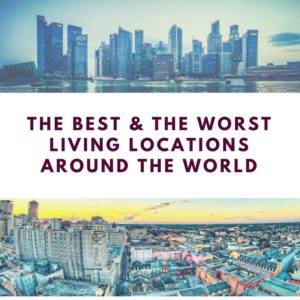 By Business Tech
By Business Tech
The Economist’s Intelligence Unit (EIU) has released its annual Liveable Cities ranking, listing the ten most and least liveable cities in the world.
The concept of liveability is to assess which locations around the world provide the best or the worst living conditions.
Assessing liveability has a broad range of uses, from bench marking perceptions of development levels to assigning a hardship allowance as part of expatriate relocation packages, the EIU said.
The Economist Intelligence Unit’s liveability rating quantifies the challenges that might be presented to an individual’s lifestyle in any given location, and allows for direct comparison between locations.
As was the case in 2016, global terrorism has kept the world on shaky ground, and has impacted the liveability in places like France and the UK, where attacks have taken place. Iraq, Libya, Syria and Turkey remain the subject of high-profile civil unrest and armed conflicts, while a number of other countries, such as Nigeria, continue to battle insurgent groups.
For the seventh consecutive year, Melbourne in Australia is the most liveable urban centre of the 140 cities surveyed, closely followed by the Austrian capital, Vienna – separated by only 0.1 percentage points.
Just 0.2 and 0.3 percentage points separate Canada’s Vancouver and Toronto (ranked 3rd and 4th, respectively), from Melbourne, and another Canadian city, Calgary, shares joint fifth place with Adelaide in Australia.
On the bottom end of the ranking are countries that have also long featured on the list for the wrong reasons, with war-torn Damascus in Syria taking the bottom spot, just below Lagos, Nigeria, which has slipped to second-worst of the 140 cities ranked.
The top ten and bottom ten are virtually unchanged, with only a few countries in the bottom improving their scores slightly.
The 10 most and least liveable cities in the world in 2017
| # | City | Country | Score |
|---|---|---|---|
| 1 | Melbourne | Australia | 97.5 |
| 2 | Vienna | Austria | 97.4 |
| 3 | Vancouver | Canada | 97.3 |
| 4 | Toronto | Canada | 97.2 |
| 5 | Calgary | Canada | 96.6 |
| 5 | Adelaide | Australia | 96.6 |
| 7 | Perth | Australia | 95.9 |
| 8 | Auckland | New Zealand | 95.7 |
| 9 | Helsinki | Finland | 95.6 |
| 10 | Hamburg | Germany | 95.0 |
| 131 | Kiev | Ukraine | 47.8 |
| 132 | Douala | Cameroon | 44.0 |
| 133 | Harare | Zimbabwe | 42.6 |
| 134 | Karachi | Pakistan | 40.9 |
| 134 | Algiers | Algeria | 40.9 |
| 136 | Port Moresby | PNG | 39.6 |
| 137 | Dhaka | Bangladesh | 38.7 |
| 138 | Tripoli | Libya | 36.6 |
| 139 | Lagos | Nigeria | 36.0 |
| 140 | Damascus | Syria | 30.2 |
Looking at Africa and South Africa, nine cities featured, but only the two South African cities were ranked within the top 100 – being Johannesburg (87th) and Pretoria (93rd).
African cities
- 87 – Johannesburg
- 93 – Pretoria
- 120 – Nairobi
- 124 – Lusaka
- 129 – Abidjan
- 130 – Dakar
- 132 – Douala
- 133 – Harare
- 139 – Lagos
The rankings are determined by assigning every city a rating of relative comfort for over 30 qualitative and quantitative factors across five broad categories: stability; healthcare; culture and environment; education; and infrastructure.
Each factor in a city is rated as acceptable, tolerable, uncomfortable, undesirable or intolerable. For qualitative indicators, a rating is awarded based on the judgment of in-house analysts and in-city contributors.
For quantitative indicators, a rating is calculated based on the relative performance of a number of external data points, the EIU said.
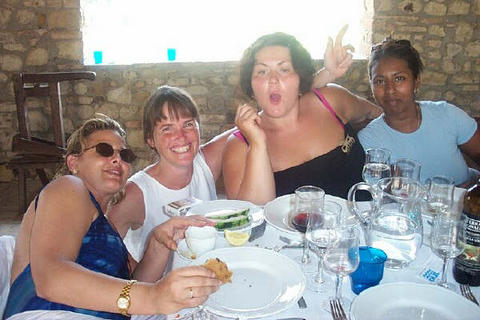
My first Expats’ photo in 2002
I like living in Rome but I don’t think I would like it in any other part of Italy!
I am Patrizia from upstate New York now living in Rome. My parents were both from Caserta, Italy and immigrated to the US when I was only an infant. I was an Expat since I was a year old.
Why Italy?
I guess it was destiny!! My mother always wanted to return to her home country and wasn’t able to do that due to a quick illness and sudden death. Our move back was canceled and we stayed in the US. I always remembered my mom talking about Italy as if it were paradise. I guess in a strange way I am fulfilling her dreams. Doing that I have learnt more about my mother and her culture.
Likes/dislikes about Italy and the Italians?
I like living in Rome but I don’t think I would like it in any other part of Italy. I have traveled and lived in other places but something draws me back here. The beauty of the city, and the nightlife, healthy lifestyle.
Has your life style changed since you moved to Rome? If yes, how?
I have been here so long that I am not sure what my old life style was 16 yrs ago 😉 I eat better and more picky about what I have. I have the convenience of having a car in the driveway or find easy parking. I adapted to things in Rome now. I am less materialistic but picked up a few superficial behaviours as well.
What is the the first thing you do when you go back to your home country?
Visit family of course, then find social networks and make new connections 😉
Does Italy/Rome seem multicultural?
Good question – I can say it is MultiCultural among those that have lived somewhere besides Italy all their lives. Rome has a meetup for foreigners and locals to meet everyday of the week. On some days there are 2 meetups for a Cultural or Language Exchange. So yes Rome is very multicultural.
Do you feel yourself integrated?
I have integrated with life here. I don’t freak out on small things. I don’t have a cappuccino after 11am anymore 😉 I dress not to stand out and put my flip flops in the trash. I sit in the post office for hours and don’t complain about it.
Could you tell us a few words about your group Rome expats?
I moved here in 2000 and in 2001 I started on a forum Expats living in Italy and there weren’t many English Speaking Expats that had access to internet so it was harder than to connect, but it was a small forum and we helped one another with information. In 2007 I started using other social media and suddenly I had a website and over 2 thousand members waiting for a meetup. We used to meet up 2 times a week for years but now it’s just once a week. With the emails coming in and managing such a large group, we have less meetups and more online help. 16 years later we have over 9 thousand members! Have a look at our video here.
Have you ever experienced any cases of discrimination/racism in Italy?
Yes… a few times in public with unpleasant remarks. I just ignore it.
Advice to a new expat in Rome? 😉
I don’t think I would have made here without a good network. I have a big network of Italian and Expat friends. It’s a referral system here in Italy. I see lots of Expats that will come to meet up and make friends with others that are living here a short time. I’d say try to make connections with those that have lived here about a year or even more.
 Anthony Majanlahti shares his story
Anthony Majanlahti shares his story
My experience of getting my residency is not the most difficult one I’ve heard of. Refugees have it worse, in fact just about everyone who isn’t an EU citizen has it harder. I can only tell my own story.
I was born and raised in Canada, of an English mother and a Finnish father. I’m a historian and writer about Rome, and obviously there’s no better place for me to live and do my research than here. However, for many years I lived here very hazardously, never sure if, once having left the country, the authorities would let me back in. I will draw a polite curtain over the stress of my life here as an extracomunitario. Temporary permessi di soggiorno for the purposes of study would expire, and have to be renewed, always from the Italian Consulate in Toronto, because they wouldn’t do it from Italy. So back I would go. And that kind of permesso didn’t give the right to work.
A few years ago, my father let me know that Finland had changed its laws to permit the children of people born in Finland to claim Finnish citizenship, probably because Finland’s population growth is negative at the moment. I didn’t have any EU citizenship rights through my mother, because the British changed their citizenship law: since I hadn’t been put on some embassy list before I was 18 years old, I had no right to British citizenship. However, now I suddenly had the right to Finnish and therefore EU citizenship. I jumped at the chance. After a surprisingly friendly and easy series of steps, I found myself clutching my prize, an EU passport. Now finally I couldn’t get sent back to Toronto.
At this point I wanted to go all the way and get my residenza in Rome. But I was perplexed. The information available online seemed contradictory and incomplete, and who knew whether or not the sites had been updated. Yet at the same time I didn’t want to go and ask anyone official – years of living dangerously had taught me an innate resistance to coming to the attention of the Italian authorities. I lived in a sort of semi-legal limbo for a long time.
My first piece of concrete advice is: if you have an EU passport, but no job, don’t be scared. There are a bunch of helpful organs ready to give you various pieces of information. I went to discuss the matter with the CGIL immigration assistance office on via Buonarroti 51, and they were very nice and gave me a lot of advice. It was also free. There was another agency of another big union, the UIL, whose offices are at via Cavour 108, near Santa Maria Maggiore, and they were even more friendly and less crowded. They too offer help and advice for free.
If you’re an EU citizen you don’t need to mess around with permessi di soggiorno or carte di soggiorno, no matter what the Ministry website says. What you want to establish is your residenza. With that, you can get your identity card and your health card, and with those pieces of identification you have official existence in Italy. You can even get a job.
Second, and this is a bit strange, but every different municipality of Rome has different requirements. As I live in Municipio I, Centro Storico, I am describing what my experience is with them. If you live in the historic centre, you are in Municipio I and you have to go down to the huge drab Fascist-era Anagrafe or Public Record Office on via Petroselli, down past the Theatre of Marcellus toward piazza Bocca della Verità. If you live in a different Municipio, check their website to see how their requirements differ: they won’t be significantly different, in any case.
Here is what you need, as an EU citizen without a contract or a job, to get your residenza:
- You need a codice fiscale, officially issued by the Agenzia delle Entrate or Tax Agency. The main Rome office is in Trastevere, on via Ippolito Nievo, 36. Getting this is easy, just turn up with your passport and fill in a bunch of forms.
- A bank statement from your Italian bank account. You have to have one of these – some banks offer accounts for foreigners. In any case, open a bank account and make sure you have the “minimo sociale” in there, which is some sort of minimal cash level to show that you won’t immediately need to sleep on the street. The amount in 2011 was €5,424.90. You don’t have to show tax documents from your home country, just a simple bank statement, as long as it’s from an Italian account and is recent.
- Your EU passport, obviously. Plus about three photocopies of it. Actually, photocopy everything, because you don’t want to find out something’s missing once you’ve been waiting for hours at the Public Record Office.
- Health insurance. I had private health insurance from Canada but you can also buy a private health plan here. You need a copy of your plan, preferably in Italian but I got away with mine in English, and several photocopies of it.
- A copy of your rental contract, or a letter from the person you are subletting from, stating that you are living there as a guest (the state doesn’t need to know you’re renting a room and won’t check if money is changing hands), along with that person’s rental contract and photocopies of that person’s identity card. Several copies of this, too.
- The Public Record Office wants to know if you’re married or single. This can be a bother to prove. For instance, I have never set foot in Finland so I was worried that the Finnish authorities couldn’t help, because as far as they know, I have seven wives and twenty-six kids. I emailed them, got a helpful email from them in English and another email address in Helsinki to write to. I wrote there and they wrote back that not only could they provide me with a “documento di stato civile”, a document proving my civil status (single), but they could send it to me IN ITALIAN. The helpfulness of the Finnish authorities almost made me cry. When I asked about how much it cost, they said they would send an invoice and I could pay upon receipt. It felt so un-Italian to be trusted like that by the state. I felt a surge of Finnish nationalism. As it turned out, though, the nice lady at the Rome Public Record Office just left all that stuff out because the document hadn’t arrived yet, and so it didn’t end up mattering. But that seemed like a matter of personal discretion on the part of the public official, so better be safe than sorry. Get some sort of document attesting to your single or married status.
- The Italians also want to know where you used to live, with some sort of official document from your home country stating your old address. But again, I didn’t have anything of the sort so I gave my mother’s address in Toronto and the nice lady at the Public Record Office just entered it in without complaint. It would be better to have something, like a letter from your home government with your name and address on it.
- Now, at this point you need either your job contract, with your last paycheck, or the dreaded partita IVA, the service tax code for independent taxable entities. The IVA is rather like the VAT in Britain or the goods and services tax in Canada, and having the partita IVA means the government expects you to pay it yourself out of your earnings. It has been raised to 21%, which is on top of your income tax of course. Since I have no contract, I had to get the partita IVA. Getting the partita IVA is super easy, rather like getting the codice fiscale which is another tax code. You just have to go to a commercialista or business manager (there are tons all over Rome and they can all do it for you), or ask the CGIL’s commercialista to do it for you, for a fee of €50. You present your passport, ask for a partita IVA, and the commercialista will ask in what sector you work. I said I worked as a translator and in cultural events, and the relevant code was soon found and entered. After about a week, the commercialista will email you your partita IVA. Everyone complains about the partita IVA. It has been described as “like having a child, but without the joy”. Apparently you have to pay an estimate on the tax that you expect to make in the next quarter, but you have to pay it this quarter. I haven’t quite figured it out. The system that was in place until January 1 of this year was called, somewhat slightingly, “per contribuenti minimi”, for minimal contributors, and it meant that if you made less than €30,000 a year (ha! I dream of €30,000 a year!) you didn’t have to go through all that rigmarole, and in fact you didn’t pay the IVA on your services at all, but the body paying you just made a “ritenuta d’acconto” or kept back 20% of what they were paying you, so they were paying the IVA and all you had to do was pay your income tax without worrying about it. Anyway it would seem that Monti’s new tax scheme has eliminated that tax program for “contribuenti minimi”, so I am in breathless anticipation to find out what is to become of me, taxwise. But. For our purposes, all you need is the partita IVA, and you can get it without much trouble.
- You also need two “marche da bollo” or government stamps, €14.62 each, which you can buy from any tabacconist’s, and two other government stamps, €0.52 each, which you can buy only from the “Cassa comunale” or City Government Cash Desk, on the first floor of the Anagrafe on via Petroselli. While you’re up there, buy the form (“modulo per la carta d’identità”) from the same desk, for €5.42. It saves you another trip up there later.
- Get some passport-sized or specifically carta d’identità-sized photos of yourself from a photo booth or photographer. Again, you won’t need them right away, but you may as well take care of it beforehand.
Make sure you have copies of everything! The Anagrafe will want the copies to keep, and will want to look at the originals, so bring it all with you.
The adventure really begins once you get to the at. It is said to open at 8.30, but by 8.30 the entrance is already crammed with a mass of people blocking your way. Sometimes someone has already made a makeshift numbering system and giving out little scraps of paper saying you’re number 16 or whatever. That makes the entrance into the Anagrafe at 8.30 slower. In any case, Bring a good book and your iPod, because chances are . Since the Anagrafe is only open in the morning, arriving after 8.30 is pointless. The bureaucracy is not fast.
Once you’re inside the Anagrafe, you will want to make your way to your , up some steps, into a large gloomy hall where you will have to decide what kind of service you want, like at the post office, and press a button to get a waiting number. You will want whatever the button is that says “”. There will probably be a helpful staff member to press the button for you if you are perplexed. However, at that point you are on your own. If your number isn’t immediately going to be called, you can exit the hall, go get a coffee and croissant at the bar inside the Anagrafe on the other side of the main entrance, and go upstairs to the Cassa comunale and buy your “” and the form (“”) for the identity card. Having done that, you will feel a pleasant sense of being armed and ready to do battle with the bureaucracy.
When your number is finally called (pay attention to the screen!), you will be brought into an office with a hopefully kindly functionary behind a desk who will ask to see your documents, may ask you questions, and will fill in a bunch of information on the computer. This functionary will tell you if there are pieces missing from your documentation – if there are, you will have to go through all of this again twice, so try to avoid missing out anything. At the end, having taken your photocopies of everything, the functionary will issue you with a wide computer-printed strip of paper, the “fascia”, which serves as a sort of interim identity document, saying in effect that your application for residenza is being processed. (You can already go to your local health authority with this “fascia” and sign up, but I waited til I had everything sorted out.) You need to bring this “fascia” back with you to get your identity card.
At this point the nice lady functionary told me, “Now all you have to do is wait for the police to come and check that you live where you say you live.”
“What?”
“Yes, you have no idea the kind of scams that people try to pull. Make sure you have your rental contract on hand and be at home when the policeman calls.”
“When will he come?”
“Oh, not within the next three weeks, I’d say,” said the functionary cheerfully. It was August. “You can certainly go on holiday without worrying.” This was all starting to look a bit haphazard and I got worried.
“What if I’m not there when he arrives?”
“Don’t worry, you’ll just have to take your rental contract and go to his office and show it to him.”
“But how is that different from showing it to you here, as I am doing now?”
“Because I am not the police,” she replied gently.
“And then what happens? Does the policeman give me a document that I bring back to you?”
“Oh, no!” she said. “The policeman sends a communication to us here, and we process it, and you come back and line up and get your identity card.”
“But how will I know when you get the policeman’s communication?”
“It usually takes about ten working days from when you see the policeman. Come back then.”
Well, I took her at her word, only to find that the police had passed by to see me when I was gone. I went to the police station on viale Trastevere, just past piazza Sonnino and before the start of via di San Gallicano, taking the piece of paper left with my concierge that gave the date and time that I should present myself at the policeman’s office. I noted that there were only two days a week when he could be found at his office, for precisely one hour, around lunchtime. I went with my rental contract, was ushered in immediately (there was no one else waiting), and a weary police officer filled in a form and glanced at my contract, and said “Congratulations. As far as the police are concerned, you are now a resident of Rome.”
“How long do I have to wait before I go back to the Anagrafe and apply for my identity card?” He laughed cynically. “All I can say is, this form will leave my office tomorrow. After that –” he spread his hands — “maybe you should wait a month or two.”
“But they told me ten days!”
“OK, OK. I can only tell you that my job ends when the paper leaves my office.”
“Well, thank you very much.”
“Welcome to Rome,” he said, already looking at another piece of paper on his desk.
I decided to wait two weeks, then risk it. This time I was smarter and got to the Anagrafe before 8 AM, and there were only about 20 or so people in front of me. I waited about 45 minutes, in high anxiety, before my number came up. I had brought my envelope with all my documents, originals and photocopies, including the “fascia” they’d given me last time. I went back into the office behind the counter, and a different functionary, but still very nice, confirmed that they had, indeed, received confirmation from the police that I was resident where I said I was, and that they could issue the identity card right away, especially since I already had the “modulo” (the form) and the photos. I handed my “fascia” over to her. After so much time and anxiety and effort, I could almost not believe it. But she put the blank identity card paper into the special printer and printed it out, then affixed one of my photos and stamped it with an official imprint. She then printed out a page entitled “ATTESTAZIONE DI REGOLARITA’ DEL SOGGIORNO PER I CITTADINI DELL’UNIONE EUROPEA” which stated that I, Anthony Majanlahti, born in.., resident in via…, of Finnish citizenship, “E’ REGOLARMENTE SOGGIORNANTE IN ITALIA”, “is staying in Italy according to the rules”. She affixed two of the “marche da bollo”, one of each kind, to one copy, and did the same to an office copy.
I left the Anagrafe with my carta d’identità, one of the old-style paper ones (“Some of the other Municipi give you the plastic card with the smart chip in it,” the functionary told me, “but it’s not free. It costs the earth!”), and couldn’t stop looking at it as I staggered up the via del Teatro di Marcello. I soon found myself in largo Argentina, and I went into a tobacconist’s to ask if I could buy a plastic cover for the identity card. “It’s my first identity card! I’m a legal resident of Rome at last!” I told the tobacconist, rather deliriously. To celebrate, he gave me the plastic cover for free.
From that point on, it was easy to get signed onto the medical system. I was in the Primo Distretto Sanitario of the ASL Roma A (which coincides with the Municipio I – check which yours is at their website, www.aslromaa.it), at via Luzzatti, 8, near piazza di Porta Maggiore. I went there with my documents, including my carta d’identità, and they filled out a quick form, took some photocopies of my passport and carta d’identità that I had already made just in case, and printed out a dummy version of my health card which would have to serve until the real one arrived by mail, a month or so later. I chose a doctor from a list of doctors near my apartment, and that was that. The real card arrived a month later and I cancelled my private health insurance. I was in the system.
Have a story to share that will help others living and working in Rome to become legal? Get the proper documents needed to make life easier? Please email us at [email protected]

